Having worked with male clients of various ages and fitness levels throughout my years as a fitness trainer, I have observed that men in their 50s encounter distinct challenges that require specific attention. To address this, I have compiled a set of top fitness tips tailored for men over 50.
Unlike younger individuals who often concentrate on aspects like building muscle mass or enhancing athletic performance, men in their 50s prioritize different goals such as long-term health, functional strength, and injury prevention. This shift necessitates a more personalized and mindful approach to exercise, recognizing that the body’s response to training alters with age.
As men cross the 50-year mark, sustaining an active lifestyle becomes more about safeguarding the physical abilities cultivated over the years. Rather than focusing solely on lifting heavier weights or increasing speed, the emphasis shifts towards maintaining mobility, reducing the risk of injuries, and ensuring that fitness routines remain sustainable in the long run.
Strength naturally declines with age, flexibility decreases, and cardiovascular endurance may begin to wane. As such, focusing on maintaining muscle mass, joint health, and cardiovascular fitness becomes crucial to staying strong, agile, and independent. The key is to train smarter, not harder, while keeping an eye on form, recovery, and overall health.
In addition to adjusting the intensity of their workouts, men in their 50s also need to embrace a more strategic and holistic view of fitness. It’s no longer just about the hours spent at the gym—it’s about integrating practices that promote joint mobility, improve balance, and protect cardiovascular health. Flexibility and mobility become as important as strength training, and recovery techniques like stretching, foam rolling, and proper rest are non-negotiable.
By focusing on these areas and maintaining a balanced, sustainable approach, men can continue to stay fit, strong, and injury-free as they age. Below are the 10 most effective fitness tips I give to all my male clients over 50 to help them achieve these goals.
Prioritize strength training.


Strength naturally declines with age, so preserving muscle mass becomes essential. Strength training helps maintain muscle mass, improves metabolism, and promotes joint health.
Aim to perform strength exercises for all major muscle groups at least two to three times per week. Incorporate compound movements such as squats, deadlifts, and presses, which target multiple muscles simultaneously and enhance functional strength for daily activities.
Incorporate mobility work.
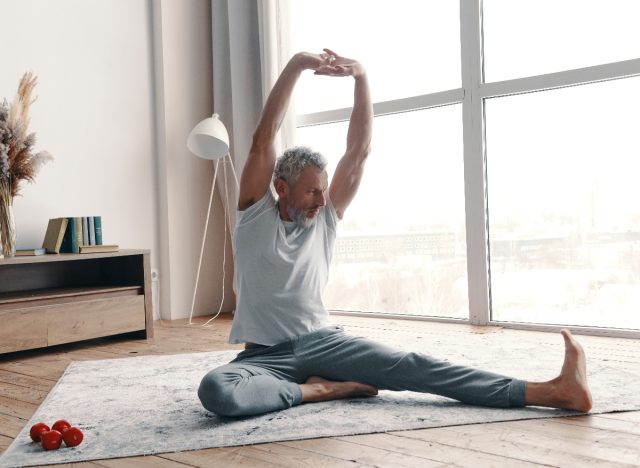

Mobility is often overlooked but is critical for men over 50. As you age, your joints lose their natural range of motion, leading to stiffness and injuries.
Dynamic stretches and mobility exercises help maintain flexibility and prevent joint problems. To keep your joints fluid and pain-free, regularly perform exercises like hip openers, thoracic spine rotations, and ankle mobility drills.
Don’t skip cardio.


Cardiovascular health becomes increasingly important as you age. Include moderate-intensity cardio, such as brisk walking, cycling, or swimming, for at least 150 minutes per week. You can also add shorter, high-intensity interval training (HIIT) sessions to improve cardiovascular efficiency and boost metabolism.
Focus on core strength.
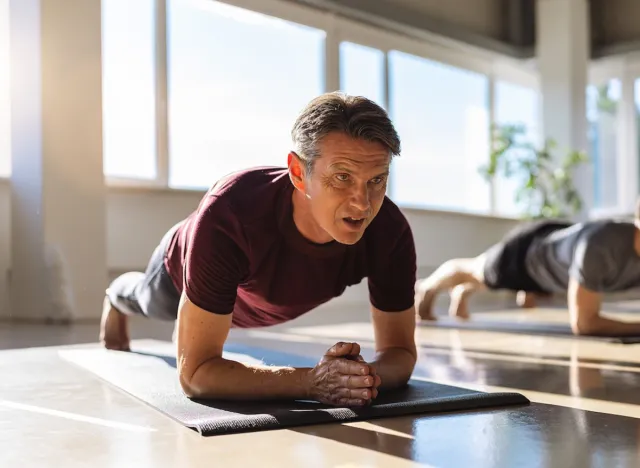

A strong core supports posture, balance, and stability, which are crucial as we age. It also helps prevent lower back pain, a common issue for men over 50.
Incorporate exercises like planks, bird dogs, and dead bugs into your routine to engage your core muscles and build functional strength that translates to daily activities.
Stay consistent, but listen to your body.
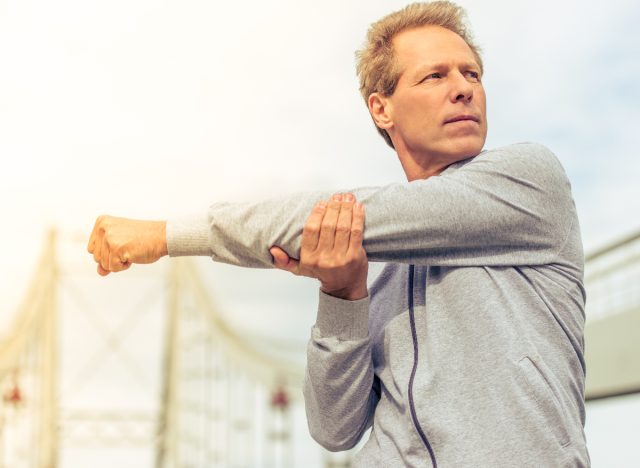

Consistency is key, but so is listening to your body. Overdoing it or ignoring signs of fatigue or pain can lead to long-term injuries.
Rest and recovery are just as important as exercise itself, so balance your workouts with adequate recovery time. Focus on working smarter, not harder, to stay injury-free.
Use proper form and technique.
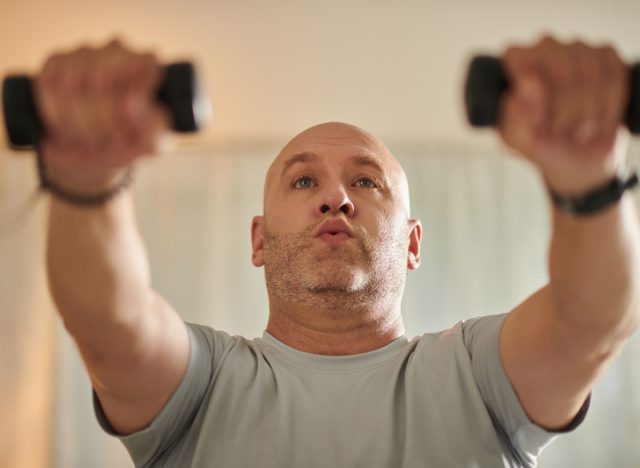

As your body changes, improper form can easily lead to injuries, particularly in weightlifting. Focus on maintaining proper form, whether you’re lifting weights or performing bodyweight exercises. If necessary, work with a trainer or physical therapist to ensure you’re performing exercises correctly and safely.
Add balance training.
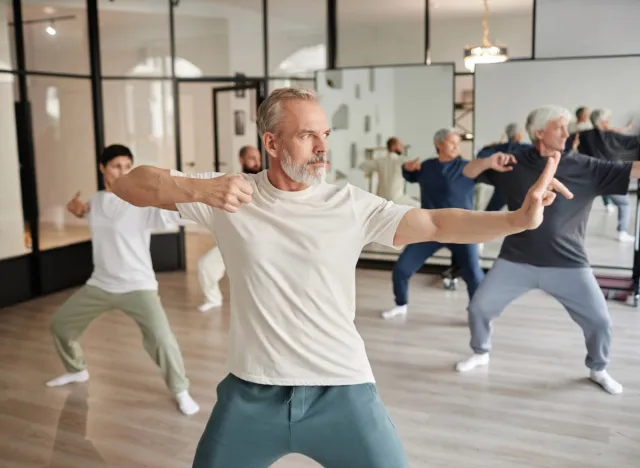

Balance declines with age, leading to an increased risk of falls. Include balance exercises in your routine to improve coordination and stability. Simple movements like standing on one leg, heel-to-toe walking, or using balance boards can go a long way in keeping you steady and confident in everyday movements.
Stretch regularly.


Flexibility decreases with age, and tight muscles can lead to discomfort or injury. Incorporate stretching after each workout to keep muscles limber and promote faster recovery. Focus on major muscle groups, particularly the hamstrings, hip flexors, and shoulders, which tend to become tight over time.
Monitor your heart rate.


As you age, monitoring your heart rate during exercise becomes essential. Keeping your heart rate within a healthy range ensures you’re working efficiently without overstraining. Consider investing in a heart rate monitor to track your exertion during workouts and adjust the intensity as needed.
Embrace recovery techniques.
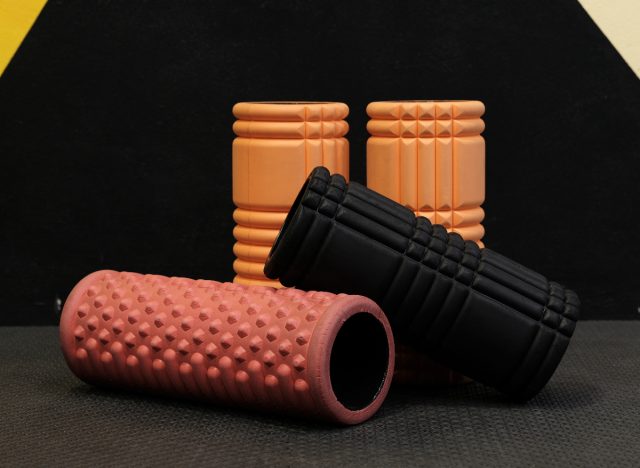

Recovery is vital to maintaining longevity in your fitness routine. Utilize recovery techniques such as foam rolling, massage, and yoga to aid in muscle repair and reduce soreness. Prioritizing recovery can enhance performance and help avoid burnout, ensuring you stay consistent in the long term.
Frequently Asked Questions (FAQs)
1. Why is fitness important for men over 50?
As men age, maintaining fitness becomes crucial for overall health and well-being. Regular exercise can help improve heart health, muscle mass, flexibility, and mental sharpness, reducing the risk of various age-related illnesses and promoting longevity.
2. What types of exercises are suitable for men over 50?
Men over 50 can benefit from a combination of cardiovascular exercises (like walking, swimming, or cycling) for heart health, strength training (using weights or bodyweight exercises) to maintain muscle mass, and flexibility exercises (such as yoga or stretching) to improve mobility and prevent injuries.
3. How often should men over 50 exercise?
It is recommended that men over 50 aim for at least 150 minutes of moderate-intensity aerobic activity per week, along with two or more days of strength training. It’s essential to listen to your body, start slowly if you’re new to exercise, and gradually increase intensity and duration.
4. What are some common fitness mistakes men over 50 should avoid?
- Overtraining: Pushing yourself too hard can lead to injuries and burnout.
- Ignoring flexibility: Lack of stretching can increase the risk of muscle tightness and injury.
- Not adjusting nutrition: Eating a balanced diet is crucial for supporting fitness goals and overall health.
- Skipping rest days: Rest is essential for muscle recovery and preventing overuse injuries.
5. How can men over 50 stay motivated to exercise regularly?
Finding a workout buddy, setting specific and realistic goals, trying new activities, tracking progress, and rewarding yourself for milestones can help maintain motivation. Also, focusing on the health benefits and how good exercise makes you feel can be strong motivators.
6. Is it necessary for men over 50 to consult a doctor before starting a new fitness routine?
Yes, it’s advisable for men over 50, especially those with pre-existing health conditions, to consult their healthcare provider before starting a new fitness program. A doctor can provide guidance on safe exercise options based on individual health status and goals.
7. How can men over 50 prevent injuries during exercise?
To prevent injuries, men over 50 should warm up before exercising, use proper form and technique, gradually increase intensity, wear appropriate footwear, listen to their bodies, stay hydrated, and incorporate rest days into their exercise routine.
8. Can men over 50 build muscle effectively through strength training?
Yes, men over 50 can build muscle effectively through strength training. Incorporating compound movements, using proper weights, focusing on form, ensuring adequate protein intake, and getting enough rest are all essential for muscle growth and strength development.
9. How can men over 50 incorporate fitness into their daily routine?
Men over 50 can incorporate fitness into their daily routine by scheduling workouts at a consistent time, making physical activity fun and varied, using everyday tasks to stay active, finding opportunities for movement throughout the day, and prioritizing exercise as a non-negotiable part of their daily schedule.
10. What are the overall benefits of staying fit for men over 50?
Staying fit for men over 50 can lead to improved heart health, increased muscle strength and endurance, better flexibility and balance, enhanced mental well-being, reduced risk of chronic diseases, improved sleep, boosted metabolism, and overall quality of life.






